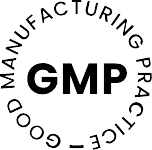The NOVA system is a classification of foods based on the extent and purpose of their processing, rather than their nutrient content. Developed by researchers at the University of São Paulo in Brazil, the NOVA system categorises foods into four distinct groups, each representing a different level of processing.
The system is widely used in nutrition science to better understand the impact of food processing on health and dietary patterns. Here are the four groups:
Group 1: Unprocessed or Minimally Processed Foods
These foods are either completely natural or have undergone minimal processing that does not significantly change their nutritional properties. Minimal processing might involve cleaning, portioning, drying, freezing, or pasteurising.
Examples include fresh fruits and vegetables, grains, nuts, seeds, fresh meat, fish, milk, and eggs.
Group 2: Processed Culinary Ingredients
This group includes substances extracted from whole foods or nature, used in home cooking and food preparation to make dishes. These ingredients usually undergo processes like pressing, refining, grinding, milling, or drying. While these items are derived from Group 1 foods, they are not meant to be consumed alone but used in the preparation of meals.
A lot of group 2 processed foods are traditional ingredients that date back long before food was made in factories, and were used to preserve food through the winter.
Examples include oils and fats, sugar, salt, honey, butter, and flour.
Group 3: Processed Foods
Processed foods are products made by adding salt, sugar, oil, or other additives to Group 1 foods, primarily to give them a longer shelf life and/or to make them taste more appealing. These foods are often recognisable as modified versions of the original food. Essentially, they are foods that are made using group 1 and group 3 foods together.
Examples include canned vegetables and legumes, fruits in syrup, smoked meats, cheese, and freshly baked bread.

Processed meats coming close to being UPFs
Group 4: Ultra-Processed Foods (UPFs)
These are the foods with chemical ingredients that you do not have in your kitchen. If you started with group 1 and group 2 foods in your own home, you would never be able to replicate the things that are done in preparing ultra processed foods.
Ultra-Processed Foods are industrial formulations made from substances derived from foods, and additives, with little or no whole foods. They are designed to be convenient and have flavourings added to make them taste appealing. They often contain ingredients like sweeteners, preservatives, colourings, flavourings, emulsifiers, and other additives.
These foods are typically associated with higher energy density, higher sugar, fat, and salt content, and lower fibre and nutrient content.
Examples include soft drinks, packaged bread, packaged snacks, instant noodles, ready-to-eat meals, and many fast foods. UPFs also include chocolate and candy bars, many breakfast cereals, packaged biscuits, pies and pastries.

Breakfast cereal a common UPF which often contains high fructose corn syrup flavourings and sometimes colourings
What are the Scariest UPFs?
Below, we list some of the most unnatural and potentially unhealthy UPFs, along with explanations of how they are made.
Artificial Sweeteners (Aspartame, Sucralose)
Artificial sweeteners are chemically synthesised compounds designed to mimic the sweetness of sugar with little to no calories. For example, aspartame is made by combining phenylalanine and aspartic acid, two amino acids, with methanol. Sucralose is derived from sucrose (table sugar) through a chemical process that selectively substitutes three hydroxyl groups with chlorine atoms.
While they provide sweetness without calories, some studies suggest that they can affect metabolism, gut bacteria, and appetite regulation.
Hydrogenated Oils and Trans Fats
Hydrogenation is a chemical process where hydrogen is added to liquid vegetable oils to make them solid at room temperature. This process creates trans fats, which are unnatural fatty acids not found in significant amounts in nature.
Trans fats are linked to increased risk of heart disease, inflammation, and other chronic conditions. They are found in many margarine products, snack foods, baked goods, and fried foods.
Textured Vegetable Protein (TVP)
TVP is a highly processed product made from soybeans. The soy protein is extracted, mixed with water, and subjected to high heat and pressure to form a fibrous texture resembling meat. It is then dried and ground into a powder or formed into chunks.
TVP is often used as a meat substitute in vegetarian and vegan products. However, the heavy processing involved can reduce the nutritional quality of the soybeans, and it may also contain additives and preservatives.
High Fructose Corn Syrup (HFCS)
HFCS is made from corn starch through a process that involves enzymatic treatment to convert glucose into fructose. This syrup is then mixed with regular corn syrup to achieve the desired level of sweetness.
HFCS is used in many sweetened beverages, snacks, and processed foods. High consumption is linked to obesity, type 2 diabetes, and metabolic syndrome.
Artificial Flavourings and Colorings
Artificial flavourings and colorings are chemical compounds created in labs to mimic natural flavours and colours. They are made from a variety of sources, including petroleum byproducts, and involve complex chemical reactions.
Some artificial additives have been linked to allergic reactions, behavioural issues in children, and other health concerns.
Margarine: the oldest UPF
The first margarine was invented in Germany using mineral oil – containing no food at all! Nowadays at least it starts out as vegetable oil, but it’s far from healthy.
Vegetable oils such as soybean, sunflower, palm, and canola are extracted from their respective seeds or fruits and then refined to remove impurities, colour, and odour. To solidify the oil and give margarine its spreadable consistency, some oils are partially hydrogenated. This process adds hydrogen atoms to the unsaturated fats in the oil, converting them into saturated fats and sometimes creating trans fats. However, due to health concerns associated with trans fats, many manufacturers now use interesterification, a process that rearranges the fatty acids in oils without creating trans fats.
Emulsifiers, such as lecithin, are added to help blend water and fat, giving margarine a smooth texture. This step is crucial for products that are sold as spreads. Flavourings, colorings (often carotenoids for a yellow hue), vitamins (such as vitamin A and D), and salt are added to improve taste, appearance, and nutritional value. The mixture is then cooled and crystallised into a semi-solid form, then packaged for sale.
What is a UPF-Free diet? use the NOVA system for healthier eating
The NOVA classification helps highlight the increasing consumption of ultra-processed foods and its correlation with various health issues, such as obesity, diabetes, and cardiovascular diseases. It emphasises the importance of whole and minimally processed foods in a balanced diet.
The ideal diet would consist of mostly group 1 foods and some group 2 ingredients. In reality, most of us don’t have the time to make all our meals from scratch. If you include some group 3 foods, you can still eat reasonably healthily. Foods from group 4 are the most harmful. You should aim to avoid them entirely.








